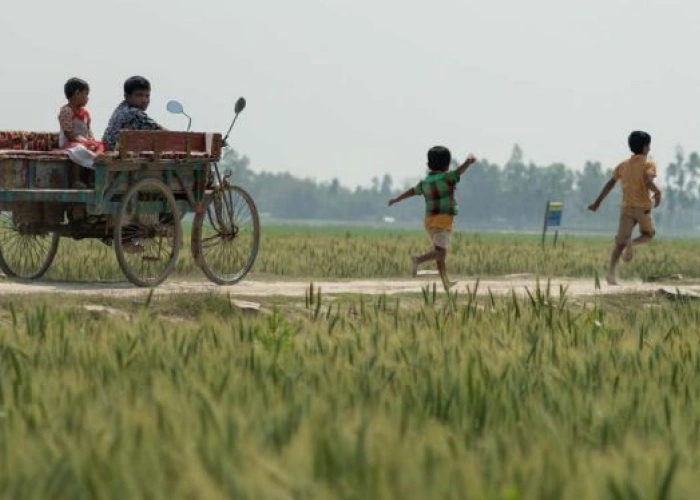South Asia Region Program 2021–22

Adapted from the project website
Countries in South Asia share many opportunities and threats that drive the need for regional cooperation, especially in the Eastern Gangetic Plains. Rice and wheat are the region’s major staple crops, accounting for about two-thirds of total dietary energy. However, food consumption patterns have changed in the region over the past few decades, and the changes are most apparent in rural areas. Consumption of cereals is declining while consumption of animal-sourced foods, fruits, vegetables and processed foods is increasing. Pressure to expand food production to meet growing demand is putting stress on natural resources. The resulting expansion and intensification of agriculture is leading to land degradation, deterioration of soil quality and loss of biodiversity, potentially jeopardising the region’s capacity to meet future food demand.
Agricultural growth also poses risks for water resources. Facing the world’s lowest per capita renewable freshwater resources, millions of rural people in South Asia have benefited from the growing use of groundwater. But aquifers are being depleted and, across the region, watertables are falling, particularly in India. Water quality is also deteriorating throughout the region due to nutrient overloads and industrial pollution, raising concerns about food safety and drinking water quality.
Large areas in several countries of South Asia are prone to natural disasters. Bangladesh and coastal parts of India are threatened frequently by cyclones and floods. Recurring droughts are a common feature in the arid and semi-arid parts of India and Pakistan. The impact of natural calamities is most severe on food-insecure households.
Climate variability, competing and increasing demands from agriculture and industry (including energy production) and population growth are creating severe demands on water availability. Regional cooperation is increasingly essential to manage these shared resources and address shared issues. There are also significant opportunities in regional cooperation to improve the productivity and diversification of agricultural crops, especially beyond cereals, and to improve the sustainability of farming systems through technical, institutional, value-chain and policy research and development.
Australian agricultural and resource management expertise is highly regarded in the South Asia region. ACIAR has a long history of research collaboration in improving crop productivity, forestry, water use efficiency and policy reforms. The South Asia regional program of the Australian Government seeks to underpin Australia’s economic engagement in the region by addressing some of the key regionwide barriers to sustainable economic growth and connectivity through the Sustainable Development Investment Portfolio (SDIP) and South Asia Regional Trade Facilitation Program. Gender equality is a focus in all the investments under the regional program.
Our strategy in South Asia focuses on communities, production systems and resource management in the 3 main ecosystems of the region – highlands, plains and coastal areas – that are common to Pakistan, India, Bangladesh, Nepal and Sri Lanka.
Research in these areas looks to identify appropriate reform policy, increase adoption of technology (including post-harvest management), improve productivity and livelihoods in marginalised communities, and improve the productivity of crop, livestock, forestry and fisheries systems.
The major pathways of development in the region are modernisation of agrifood systems, technology support, strengthening service providers, developing rural non-farm sector, and local governance at district and state level. Overproduction in some areas and unequal distribution networks due to poorly developed supply-chain management are the major issues in India. Addressing these could play a major role in achieving food and nutrition security and stability in the region.
The medium-term to long-term strategy in the region focuses on creating regional collaborations that:
- sustainably intensify and diversify cropping systems using conservation agriculture/zero tillage, farm mechanisation, saline land management and adaptation to climate change
- eradicate extreme poverty through improved productivity of food-grain crops (especially wheat and pulses), livestock (in Pakistan), agroforestry (in Nepal) and fisheries (in Sri Lanka)
- better manage agricultural water, including rainfed areas in the Eastern Gangetic Plains and coastal zone
- influence policy about agricultural and farmers’ livelihoods and climate change
- increase the emphasis on meaningful gender inclusion and empowerment.